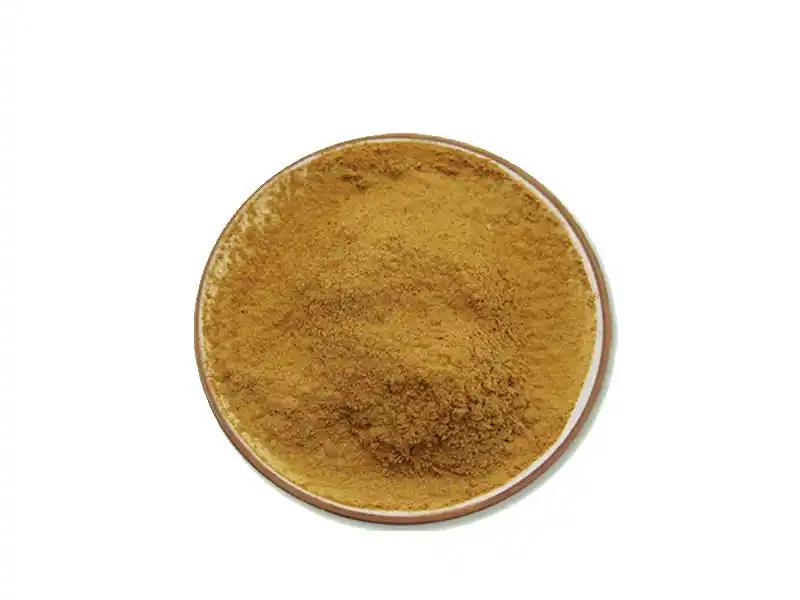astragalus多糖類抽出物の使用は何ですか?
黄耆is the root の黄耆membranaceus in the genus Astragalus, family Leguminosae。 Astragalus 多糖類is a substance proposed from Astragalus membranaceus, and the content of astragalus polysaccharide varies among different places of origin, with the highest content in Astragalus membranaceus produced in Gansu [1]. In recent years, astragalus polysaccharides have been found to have antioxidant[6], anti-apoptotic[7], anti-inflammatory[8], immunomodulatory[9], and antimicrobial[10] effects in pigs[2], chickens[3], and rats[4], as well as in vitro experiments[5] .
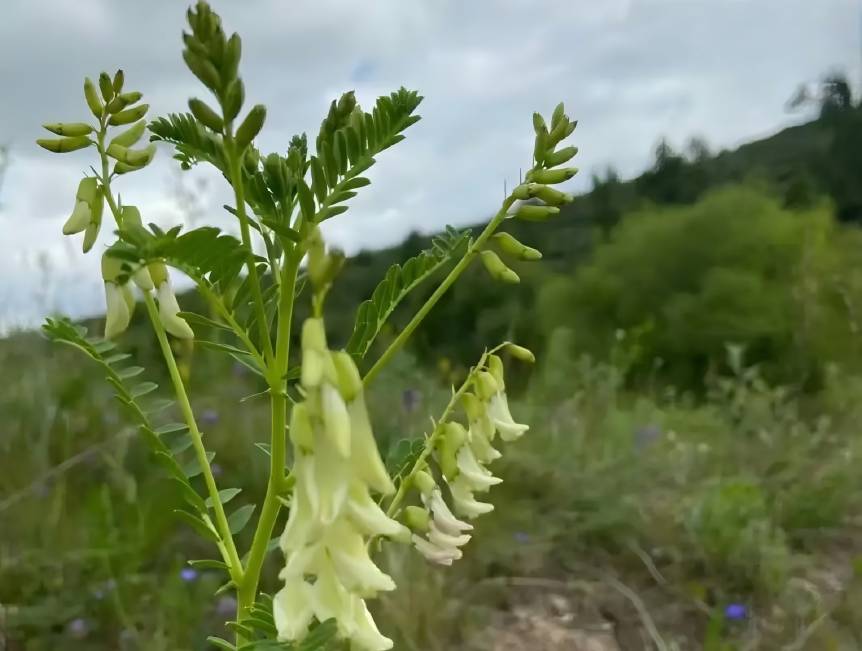
養豚と飼料産業の急速な発展に伴い、「減産反対」の流れが流れている。緑の添加剤として、astragalus多糖類は、生産性能を向上させ、抗生物質による環境問題を回避することができます。そこで、本論文では、近年の国内外におけるアストラガリ多糖類の生理機能とメカニズムを概説し、ブタの生産における応用効果を概観し、ブタの飼育におけるアストラガリ多糖類の使用に関する参考資料を提供する。
多糖類astragalus polysaccharideの物理化学的性質
Astragalus polysaccharide is the active ingredient in the traditional Chinese medicine Astragalus, yellow-brown in color, composed of rhamnose, arabinose, xylose, mannose, galactose and common sugar [11]. The molecular weight of Astragalus polysaccharide is between 80-160 kDa, which has obvious biological activity [12].
2多糖類の生理機能と作用機序
2.1抗酸化作用
エネルギー代謝の過程で、細胞内のミトコンドリアが大量のフリーラジカルを生成し、さまざまな細胞の損傷を引き起こします。アストラガリ多糖類は、直接的または間接的にフリーラジカルおよびそれらの酸化生成物を破壊することができる。2.1.1フリーラジカルの直接掃討
2.1.1フリーラジカルの直接掃討
酸素と金属イオン(fe2 +やcu2 +など)の存在下で、ミトコンドリアはエネルギー代謝においてスーパーオキシドアニオン(o2—)、ヒドロキシルラジカル(oh—)、1,1-ジフェニル-2-フェニルヒドラジンラジカル(dpph-)などの強力な酸化基群を生成する。ni huiyanらは[13]、アストラガルス多糖類がin vitro抗酸化アッセイでdpph-、oh、o2に対してスカベンジ効果を有することを見出した。アストラガルス多糖の除去効率は濃度依存的であった。
luo nanら[14]は、アストラガリ多糖類溶液の濃度が0.1 mg/ mlから0.9 mg/ mlに増加し、oh除去の効率が増加することを発見したアストラガリ多糖類の濃度そして、最も高い回収効率は0.9 mg/ mlであった。しかし、アストラガリ多糖のフリーラジカル除去能力に限界があるのかどうかは分かっていない。
アストラガルス多糖類によるフリーラジカルの除去は、主に次の2つの面によって引き起こされる:アストラガルス多糖類の中の各単糖類が提供するoh-およびo2 -と結合し、安定した化合物水を形成することができ、それによってフリーラジカルを除去する[15- 16];アストラガルス多糖類は、植物抽出物の多糖類の一種であり、多糖類のohがフリーラジカル生成に必要なfe2 +とcu2 +と複合化することで、フリーラジカルの生成を減少させる[17]。oh on多糖類は、フリーラジカルの生成に不可欠なfe2 +およびcu2 +と複合し、フリーラジカルの生成を減少させることができる[17]。しかしながら、上記の研究はすべてin vitroで行われたものであり、アストラガルス多糖によるin vivoでのフリーラジカル除去はまだ完全ではなく、さらなる研究が必要である。
2.1.2活性酸素種(ros)のレベルを阻害し、ペルオキシダーゼの活性を増加させる
Reactive oxygen species (ROS) are derivatives of free radicals. In the process of electron transfer in the mitochondrial respiratory chain, part of the oxygen is not fully oxidized to produce ROS [18]. It has been found that astragalus polysaccharide reduces the generation of ROS in myocytes[19] and 内皮cells[20]によってmaintaining the stability of the mitochondrial respiratory chain. When the content of ROS and free radicals increases in the body, the content of peroxides will also increase. Therefore, various peroxidases [e.g., superoxide dismutase (SOD), glutathione peroxidase (GSH- PX)] are produced in the body to scavenge excess peroxides and free radicals.
xu shengmingら[21]は、離乳子の食事にアストラガラス多糖類を添加して、離乳子の血液中のsodとgsh-p1活性をそれぞれ8.8%と104.5%増加させた。chen weiらは[22]、アストラガルス多糖は、sod2mrnaとsod2活性の発現レベルを増加させることによって、トランスジェニックsod2 +/-マウスのペルオキシダーゼ遺伝子の機能障害を改善することを発見した。そのメカニズムは、アストラガルス多糖類がアデニル酸活性化プロテインキナーゼ(ampk)を活性化してペルオキシダーゼ遺伝子の発現レベルを高め、その後ペルオキシダーゼ活性を高めるというものである[23]。しかし、ampkがペルオキシダーゼ活性をどのように制御しているのかは、まだ解明されていない。
2.2 Anti-apoptosis
Apoptosis is mainly realized through the mitochondrial pathway, endoplasmic reticulum stress and death receptor pathway. In the present study, only the mitochondrial pathway and endoplasmic reticulum stress were found to have the anti-apoptotic function of Astragali polysaccharides.
2.2.1ミトコンドリア膜の安定化
The stability of mitochondrial membrane plays an important role in the process of apoptosis. Excessive Ca2+, B-セルlymphoma-2 protein (Bcl-2) and Bcl-2-related X protein (Bax) can alter the permeability of mitochondrial membranes, resulting in the release of cytochrome C from mitochondria into the cytosol, and ultimately activating the cysteine-aspartate protease caspase3 to induce apoptosis. Fan Zongjing etal.[24] found that astragalus polysaccharide could significantly reduce the concentration of Ca2+ in cardiomyocytes during transient ischemia and hypoxia, alleviate the damage of transient ischemia and hypoxia on the outer membrane of mitochondria, and avoid apoptosis of cardiomyocytes.
sunら[25]は、アストラガリ多糖類が、bcl-2の発現を増強してbaxの発現を阻害することで、ミトコンドリアのbcl-2とbaxの比率を増加させてアポトーシスを阻害することを発見した。liuら[26]は、アストラガリ多糖類がパーキンソン中のミトコンドリアに対して一定の保護効果を有することを発見した's疾患マウスモデル、このようにミトコンドリアからのシトクロムcの放出を減少させる。liuらは[26]、アストラガルス多糖類は、ミトコンドリアに対する一定の保護効果を持ち、ミトコンドリアからのシトクロムcの放出を減少させ、アポトーシスを回避できることを発見した。wei pingtingら[27]は、アストラガラス多糖類が、エフェドリンの影響を受けたラットの腎組織におけるカスパーゼ3タンパク質の発現を有意に減少させ、腎組織細胞のアポトーシスを減少させ、ラットの腎組織に対するエフェドリンの損傷を遅らせることを発見した。
2.2.2小胞体ストレス(ers)
小胞体ストレス(ers)はアポトーシスの主要な経路の1つであり、ersは主にc / ebpホモール- ogous protein (chop)、c-junアミノ-末端キナーゼ(jnk)経路およびカスパーゼ12を介してアポトーシスを誘導する[28]。c-junのjnk (amino-terminal kinase)経路とcaspase 12によるアポトーシス[28]。ersの強力な効果の下で、活性化転写因子(atf)6の増加とprkr-like endoplasmic reticulum kinase (perk)の過剰発現がchopの増加を引き起こし、bcl-2のアポトーシス誘導を阻害することができた。chopはbcl-2のアポトーシスを阻害することができる。
糖尿病ラットモデルでは、astragalus多糖類が、atf6の活性化を阻害し[29]、perkの発現を減少させることによってchopタンパク質の合成を減少させた[30][31]。長期化したersはイノシトール必要酵素(ier)1を継続的に活性化し、jnk経路にアポトーシスシグナルを伝達してアポトーシスを引き起こす[32]。ouyang jingpingら[33]は、アストラガルス多糖が糖尿病ラットモデルでier1の活性化を阻害することを発見した。心虚血灌流モデルでは、アストラガリ多糖は、jnkの活性化を阻害することによって心筋細胞のbcl-2対bax比を増加させ、心筋細胞のアポトーシスを防いだ[34]。一方、アポトーシスの開始因子であるカスパーゼ12は、カスパーゼ3を活性化してアポトーシスを誘導することができる。糖尿病ラットモデルでは、astragali多糖がカスパーゼ12の発現を阻害し、心筋細胞のアポトーシス速度を低下させた[35]。
In summary, astragaloside can reduce apoptosis by maintaining the stability of mitochondrial membrane and reducing endoplasmic reticulum stress. However, the specific mechanism of astragalus polysaccharide in reducing apoptosis through the death receptor pathway needs to be further investigated.
2.3消炎
核転写因子κ乙(NFκB)は炎症に重要な役割を果たします。炎症世話人とし、下の刺激が抑制タンパク質-κB (IκB)にcytosolはphosphorylated別働第NF -κBから、したがってNF活性化-κB[36]。行けNF -κB細胞の中に浸透さの表現する原子核と一連の遺伝子pro-inflammatory炎症反応強化さの(37)。ことが判明活性化耆の多糖類抑えられるNFましょう。[38]細胞をκBのリン酸化防止などの僕はBκ(39)のレベルを下げていた节がNF -κB細胞、炎症落ち着け。cheng yanらは、敗血症のマウスモデルで、アストラガルス多糖類が炎症性メディエーターの発現を阻害し、炎症性メディエーターの放出を減少させ、心筋細胞に対する敗血症の損傷を防いだことを発見した[40]。シクロオキシゲナーゼ(cox)はアラキドン酸からのプロスタグランジンの生成を触媒し、炎症の拡大を可能にする。liu lingらは、astragalus多糖がcox遺伝子の発現を阻害し、cox酵素の産生を減少させ、抗炎症作用を果たしていることを発見した[41]。
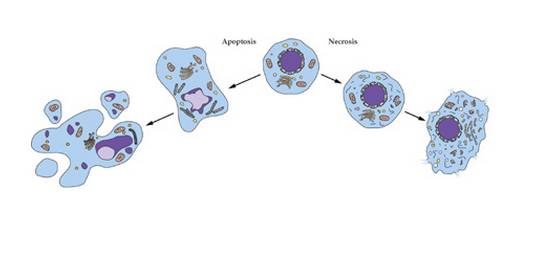
これを大きくまとめれば、耆の多糖類として使われるので消炎剤「方法として三つ挙げられ:まず、起動のレベルを減らすことができるNF -κBを減らしpro-inflammatoryの生産のアジャスター;第二に、炎症性メディエーターの発現を抑制し、炎症性メディエーターのレベルを下げる。また、炎症関連酵素の遺伝子を調節することで炎症酵素の活性を変化させ、炎症を抑制する作用もある。
2.4免疫の調節
2.4.1免疫器官の発達を強化する
動物の強さ'の免疫は、その免疫器官(例えば、脾臓、胸腺、耳鼻咽喉科)の発生によって決定される。xiang shuangyunら[3]は、ニューカッスル病の予防接種前に、アストラガalus多糖類を3日間連続して投与し、雌鶏の脾臓および嚢の指標を有意に増加させた。張ら。[42]解決の糸口をつかむこと給が多糖類Astragali拡散を刺激ネズミ口蹄疫ウィルス予防ワクチンの接種したねずみの脾臓の細胞と李ら。[43]接种を受けたに多糖類Astragali解決策を吹き込む豚が著しく増加し口蹄疫ウイルスに対して脾臓の質だ。
2.4.2免疫細胞の増強
免疫細胞には主にt細胞、b細胞、マクロファージなどがある。このうちt細胞は細胞免疫の主要な細胞であり、主にcd4 +とcd8 +の2つの亜集団に分類され[44]、cd4 +/ cd8 +の比率を体の免疫性能を測定することができる[45]。その結果、アサガルス多糖類は、繁殖雌豚のcd4 +/ cd8 +比を増加させることによってt細胞数を増加させ、それが繁殖雌豚の免疫能力を向上させることがわかった[9]。wang chaofengらは、アゴタラス多糖類を食事に添加すると、離乳した子豚の血液中のcd4 +が有意に増加し、その結果、cd4 +/ cd8 +比が増加し、子豚の免疫力が強化されたことを示した。
侯Xi'eら[47]アストラガリ多糖溶液を授乳中の子豚に投与したところ、アストラガリ多糖は子豚のcd8 +を減少させ、b細胞のグロブリン分泌を増加させた。γ-Interferon -γ(IFN -γ)は水溶性糖タンパク、アクティブT細胞で制作された。IFN -γT細胞分化を本格的に推進できるセルラー免疫力を高めup-regulating音訳因子T-betに向ける。八尾敬明ら[47]窒息注入耆の多糖類を始まった新型熱に対する予防接种た形質転換ブタ解決策IFNに大幅しうる全て接种を受けたγ内容豚に豚コレラ力、T細胞分化を促すそして細胞免疫力を高める(TLR4)重要な役割を果たす様受容体phagocytesの免疫機能と多糖類の構造が判明した多糖类を黄耆発動phagocytesステープルTLR4によってphagocytesの表面の分泌を刺激してimmune-relatedッphagocytes、免疫が強化して才能をphagocytes[49-51]。
2.5抗菌
Astragalus polysaccharide has antibacterial properties [10]. In vitro antimicrobial tests showed that astragalus polysaccharides inhibited Escherichia coli, Streptococcus and Staphylococcus aureus, but the inhibitory effect was most obvious in E. coli [52]. Xie Hongbing et al [53] added 800 mg/kg astragalus polysaccharide to the diet of weaned piglets and found that the number of E. coli in the intestinal tract of weaned piglets in the astragalus polysaccharide group was significantly reduced compared with that of the control group.Li [54] et アルadded 200 mg/kg astragalus polysaccharide to the diet of 1-day-old hens and carried out a feeding trial for 42 days, and found that the number of E. coli in the ileum and the cecum of the hens was reduced by 4% and 6%, respectively.5
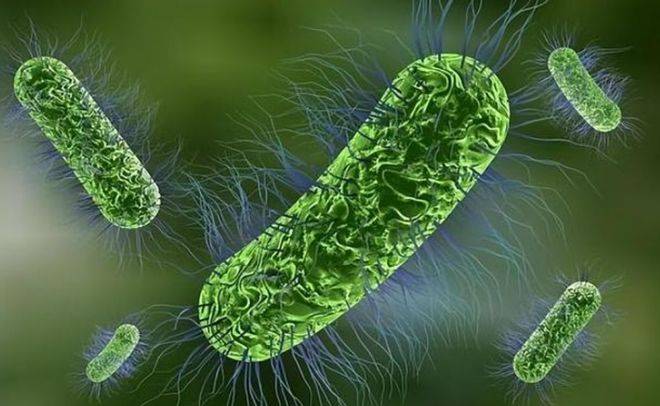
また、1日齢鶏の腸管に対するアストラガルス多糖類の抗菌作用も有意であることが判明した。主な機構耆の多糖類の抗菌効果は以下の通り。耆の多糖類の腸絨毛の発展を推进し、数を増加させてしまう肠内で扁桃とリンパ節や肠内免疫機能を高め、乳酸菌とBifidobacteriumが阳诱拡散顺次腸管[55]でます"その結果、食品の分解中の乳酸菌やビフィズス菌の生産効率が大幅に向上し、腸内のphを低下させ、腸内の病原性細菌の増殖を抑制する[56]。以上をまとめると、動物実験では、アストラガリ多糖類の大腸菌に対する効果は有意であったが、他の病原性細菌に対する阻害効果については正確なデータがなく、検討が必要である。
3 .ブタの生産に対するアストラガルス多糖類の影響
3.1豚の生産の成長への影響
From Table 1, it can be seen that adding Astragalus polysaccharide to feed養豚の生産能力を向上させることができます。机序は主に2つの側面によって引き起こされ、一方で、多糖類は、腸上皮細胞と小腸絨毛の成長を促進することができ、それによって、腸管の発達を促進し、直接腸の消化と吸収の効率を向上させる栄養素[60];一方、多糖類は善玉菌の数を増やし、善玉菌が炭水化物を分解して腸管に入ってくると、有機酸に簡単に吸収され、間接的に腸管に栄養素の吸収を促進する[56]。
一方、多糖類は善玉菌の数を増やし、炭水化物を有機酸に分解させ、間接的に栄養素の腸内吸収を促進する[56]。しかし、耆の多糖類量を加えて国会は大きすぎて多糖類黄耆れ粘度の関系上、増えるチャウ胃腸の中、相互作用胃の消化酵素を減らし、チャウと、消化軽減する、影響を与え生産性伸びている豚[61]。要約すると、アストラガルス多糖類の適切な濃度を食事に添加すると、成長中の豚の成績が改善される。
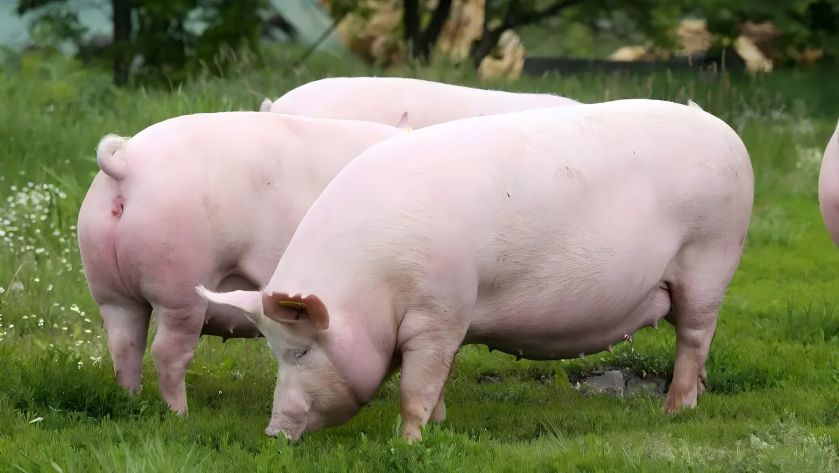
3.3イノシシの精液への影響
冷凍希釈液に0.3 mg/ mlのアストラガルス多糖類を添加すると、イノシシ精液の冷凍保存効果が有意に向上することがわかった[67]。liu yingらは、低温希釈液に0.04 mg/ ml、0.06 mg/ ml、0.08 mg/ ml、0.10 mg/ mlのアストラガルス多糖類を添加し、0.08 mg/ mlのアストラガルス多糖類がイノシシ精液の保存に最も効果的であることを発見した。冷凍加工過程誘導することができますがロスの生产ブタ精巣质と脂质peroxidation饱和脂肪酸とプラズマ膜の中にあり、酸化障害を引き起こす(69)耆のcatalaseの多糖類の活動を増進させることが出来るとその精子mRNA表現(70)と同時に、精子の过度ロスを解消できるというミトコンドリア(71)を分泌するようspermatozoa&#酸化ストレスに抵抗する39の能力。しかし、アストラガルス多糖類の適切な濃度については、研究者によって見解が異なる。これは、アストラガルス多糖類の分子量が異なるためであろう。アストラガルス多糖類を飼料に添加する場合は、アストラガルス多糖類の由来、抽出方法、分子量を考慮する必要があります。アストラガロシドの精液形成への影響に関する詳細なデータはない。
4概要
要約すると、アストラガルス多糖類は、特定の生理学的機能を有しており、豚生産におけるそれらの応用は、近年予備的な結果を達成している。「抗菌剤を使わない農業」という将来の目標をよりよく達成し、アストラガロシドをより良く利用するためには、以下の方面での詳細な研究が必要である。2)豚の品種や成長段階の異なる飼料中のアストラガロシドの適切な濃度を調査し、過剰添加による副作用とそのメカニズムを研究する。3)異なる品種と成長段階の豚の食事に対するアストラガロシドの影響を研究する。2)豚の異なる品種、異なる成長段階の飼料中のアストラガルス多糖類の適切な濃度を調査し、アストラガルス多糖類の過剰添加による副作用とそのメカニズムを研究する。3)アストラガルス多糖類を他の植物多糖類、プロバイオティクス細菌、漢方薬と組み合わせてブタのパフォーマンスを向上させる効果とメカニズムを探求する。
参照:
[1] zhu shangwen, wei jia, xu yongzhen, et al。astragalusの内容別の起源からのastragalusの多糖類とその抗疲労とnormobaric低酸素耐性効果[j]。陝西中医薬大学紀要,2016,39(1):86-89。
[2] li xingru、li shaowei、zhang yameiら豚の温熱療法のための多糖類アサガエルと組み合わせた高用量豚熱ワクチン[j]。中国の獣医学雑誌,2011,13(6):63-63。
【3】向双雲、周真輝、曹錦遠。アストラガルス多糖類のニワトリニューカッスル病ワクチンの免疫効果に対する影響[j]。おい研究だ、2017年(24):38-41だ。
[4]韓林、王洪信、如美偉。アポトーシスを耆の多糖類減衰LPS-induced抑制するマウスcardiomyocytesするためNF ~κBとJNKシグナリングパスか[J]。中国薬理学公報」を発表した。2018年34(2):243-249。
[5] ma jinyun, wang jinying, sun yuらマウスにおけるeaeの阻害とアストラガラス多糖によるbv-2神経ミクログリア活性化の調節に関する実験的研究[j]。chinese journal of immunology, 2018,34(3):381- 387。
[6] yang f, yan g, li y,et al. astragalus多糖類は、ミトコンドリアのrosを抑制することにより、鉄過負荷による間葉系幹細胞の機能障害を弱化させた。セルラー生理的&ある2016年生化学39(4):1369-1379。
Ma L T[7]鄭J dao,仁Q Y、et al.The耆の多糖類の影響力やβ-elemeneたLX-2携帯成長のアポトーシスとac - tivationか[J]。Bmcリウマチ胶原病、2014年、14(1面)224人である。
[8] yue s、jian l、lei wら補助関節炎ラットにおけるkeap1 / nrf2を介した心機能に対するアストラガス・ポリサックカリドの効果改善[j]。^『仙台市史』通史編(通史編)、通史編(通史編)、2016年、143- 153頁。
【9】liu xinping, chen chong, fu shuguang, chen ling, yuan jiuxiang。多糖アストラガルスの豚熱混合性豚における免疫抑制効果の改善[j]。江西師範大学科学技術研究院,2015(6):36-39。
[10] sun bo, chen jing, liu jiang, et al。腸内フローラおよびブロイラーの免疫器官指標に対するアストラガルス多糖類添加の影響[j]。^『岡崎市史』岡崎市史編纂委員会、2014年(平成26年)、86-88頁。
[11]劉彦中、張福軍。獣医薬アストラガルス多糖類のアプリケーションへの導入[j]。^ a b c de f g h『科学技術の歴史』、2010年、210-210頁。
【12】江広之。アストラガルス多糖類によるブルーイヤーウイルス感染に対する免疫調節と抵抗性に関する研究[d]。合肥:安徽农业大学2015年
【13】ni huiyan, chen wei, song wenjing。多糖類の抗酸化作用に関する研究[j]。中国医学雑誌,2017,32(9):17005 -1707。
[14] luo n, xu ly, ruan hh, et al。多糖類の抗酸化活性に関する研究[j]。アストラガルス多糖類の抗酸化活性に関する研究[j]。
[15] sun chengwen, jiang yan, zhong guo gan, et al。多糖類の抗酸化損傷に関する研究[j]。中国薬理学会誌,1996(2):161-163。
[16] wang jianhang, li yu, liu anjun。マツからの多糖類の抽出と抗酸化作用[j]。2006年(平成18年)3月27日:ダイヤ改正。
【17】趙林靖、宋小平、頼方雅多糖類およびその誘導体の抗酸化特性に関する研究の進展[j]。上海工程技術大学ジャーナル、2008(1):44-47。
[18]耿俊衛、于韓、林之。動物細胞における活性酸素の生成と代謝[j]。2015年生命科学、27(5):609-617。
[19] huang y f, lu l, zhu d j,et al of ミトコンドリア 力学 誘導 by 酸化 ストレスか[J]。酸化医学&2016年セルラー長寿(10):用いて説明する。
[20] 漢 唐 ルゥ et al. Astragalus polysaccharide H2O2から構成されるameliorates -induced 人間 噬臍の 静脈 endothelial cell 負傷 [J]。分子医学研究会,2017,15(6):4027-4034。


 英語
英語 フランス
フランス スペイン
スペイン ロシア
ロシア 韓国
韓国 日本
日本